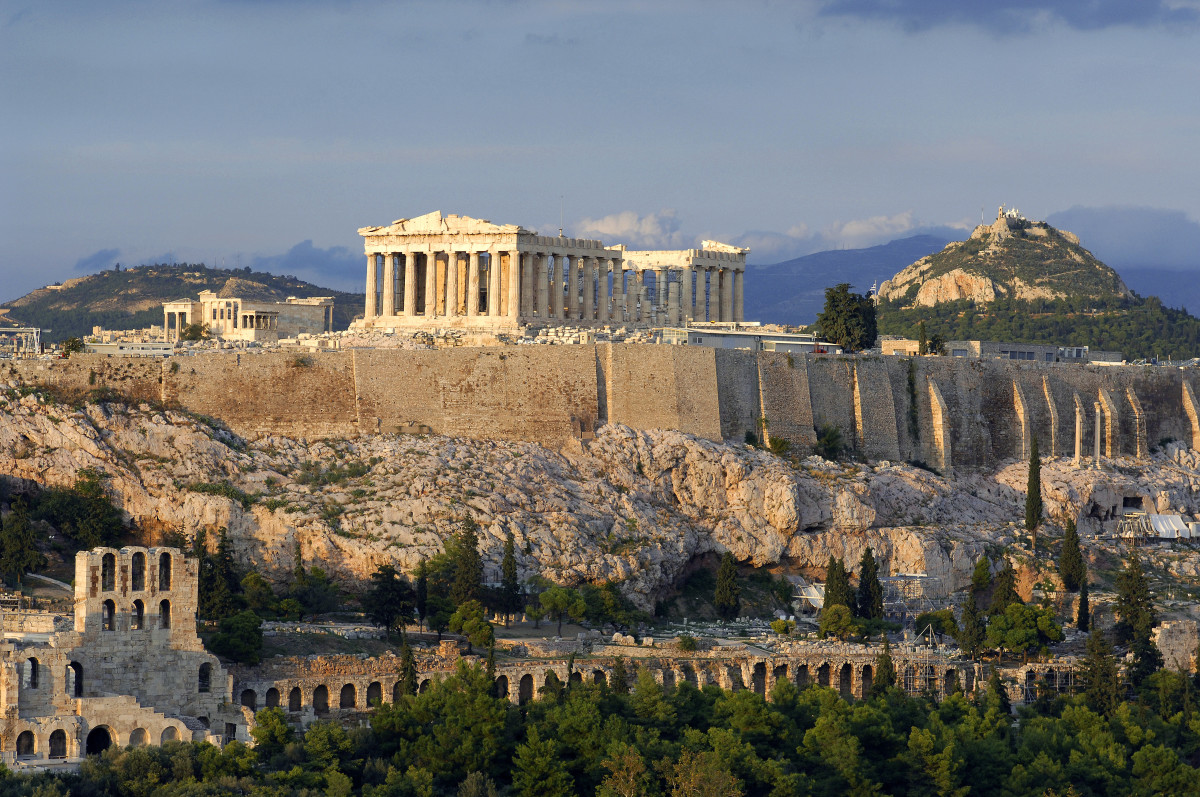For the Greeks, the prevailing social and political unit gradually became the polis (plural, poleis), roughly translated as the “city-state,” though many were too small to be cities. The “kings,” or local chieftains, of Mycenaean times had disappeared, and the prominent men in each community had begun to form councils and other groups to manage public affairs. Usually the community centered upon a fortress built upon a hill, “the high city” or acropolis, and also possessed a public square or gathering place for assemblies, the agora.
Our scanty and unclear sources give us a picture of a society in which the rich alone could afford expensive horses and military equipment and therefore controlled the instruments of coercion. They had organized themselves into an aristocracy of family and wealth, and they dominated the poor who worked the land. A middle class of well-to-do farmers, merchants, and craftsmen also came into existence. Social conflict within and among classes was a normal condition of life.
One-man rule became the characteristic form of government within city-states beginning about 650. To some extent the conflicts were dampened, the power of the aristocracy held in check, and the lower classes protected; but in each case the personal qualities of the tyrant determined the success and decency of his rule. Usually the power of a tyrant did not last more than one or two generations at the most.
There was also large-scale colonial expansion. The city-states of Asia Minor and of mainland Greece sent out naval expeditions to plant new settlements in non-Greek areas where there was no power strong enough to prevent them: around the Black Sea, along the African shore of the Mediterranean (in what we now call Libya), in Sicily and southern Italy (which the Romans later called Magna Graecia, “Greater Greece”), and as far west as the coasts of France and Spain. Each new colony became a new citystate-independent of its mother city, though bound to it by historical and economic ties and by similar political and religious practices. Overpopulation and internal strife in the settled cities, together with the wish for trade and adventure, advanced the colonizing movement. Byzantium at the Black Sea straits, Syracuse in Sicily, Naples in southern Italy, Marseilles in southern France, and Cadiz on the Atlantic coast of Spain are among the famous cities that began as Greek colonies.
Combined with the decline of Egypt and the Assyrian conquests in western Asia, such colonization set off a period of Mediterranean trade focusing on Greece. By the mid-seventh century, coins, invented in the Anatolian kingdom of Lydia, had begun to be minted on the island of Aegina in Greece, where silver was the only precious metal available. This convenient system of recording commerce soon spread westward, each city-state making its own coinage. (The coins of Aegina had turtles on them; those of Corinth, foals; those of Athens, the owl of Athena, patron goddess of the city.)
In the area of southern Greece called the Peloponnesus, a fertile, almost landlocked region, the city-state of Sparta developed. The Spartan polis was ruled by the descendants of the Dorian conquerers, perhaps 10 percent of the total population and the only citizens, called the homoioi, or “equals.” Most of the people belonged to the class of helots, farm laborers who belonged to the state, which assigned them to work the lands of the citizens. In between was a free class called perioikoi (dwellers around), descendants of the pre-Dorian residents of neighboring areas, who lived in the villages under Spartan control and had personal freedom but could not participate in politics or intermarry with the Spartans; they were also subject to Sparta in foreign and military matters. No helots were assigned to the perioikoi, but they could buy slaves abroad if they wished. The ruling Spartans lived in constant fear of revolution; they kept secret agents planted among the helots to report subversive talk, and they barely managed to put down a helot uprising in the late seventh century.
The constitution, which the Spartans attributed to a divinely inspired lawgiver, Lycurgus, provided for two kings, perhaps descendants of two rival Dorian families. Real political power came to reside in five overseers elected annually by an assembly of all Spartan citizens over the age of thirty-excluding all women, helots, and perioikoi. There was also a kind of council of thirty elders representing the more powerful families.
War dominated Spartan thinking. The males lived under military discipline from the age of seven, when a boy was taken from his parents and taught reading, music, running, and fighting. Weak-looking babies were abandoned to die. So that they might bear healthy children, girls were also given strenuous training. Adult males lived in barracks until they were thirty, though they might marry at twenty; they dined in the mess hall until they were sixty. It was a harsh, regimented life, “Spartan” in its merits and in its defects. It was a barracks state.

